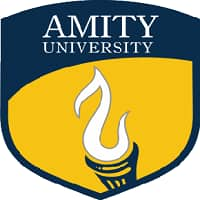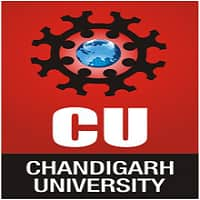UPES B.Tech Admissions 2025
Ranked #42 among Engineering colleges in India by NIRF | Highest CTC 50 LPA , 100% Placements | Last Date to Apply: 28th April
KEE 2025 - Karunya University is conducting the KEE 2025 phase 2 exam on April 5 and 6, 2025. The KEE 2025 phase 1 exam was conducted on January 11 and 12, 2025. Only those candidates who complete the KEE registration process were issued the KEE admit card. Candidates who seek admission to B.Tech courses have to appear for KEE 2025. The authority will soon declare the KEE 2025 result online. Candidates who appeared for the Karunya Entrance Exam will be able to access the KEE result link on the website, karunya.edu. Candidates declared qualified as per the KEE 2025 result will be eligible to participate in the counselling process. The KEE counselling 2025 will be based on the candidate's performance in KEE 2025.
The authority concluded the KEE 2025 registration for phase 2 on the official website. Candidates could apply for the KEE phase 2 till April 2, 2025. Students who have passed 10+2 from a recognised board in Physics, Mathematics and Chemistry / Biology / Information Technology / Computer Science / Agriculture / Engineering Graphics are eligible for the KEE exam 2025.
About KEE Exam
Karunya University offers admission to various undergraduate courses like B. Tech, B.Sc., B.B.A, BCA, and B.Com. Candidates who wish to pursue B.Tech courses in the institute will have to appear in the Karunya University Entrance Examination (KEE) 2025 while for all other UG courses, the admission will be based on the marks obtained in the qualifying examination (10+2).
| Full Exam Name | Karunya University Entrance Exam |
| Short Exam Name | KEE |
| Conducting Body | Karunya University |
| Frequency Of Conduct | Once a year |
| Exam Level | University Level Exam |
| Languages | English |
| Mode Of Application | offline +1 more |
| Application Fee | Online : 1000 |
| Mode Of Exam | online |
| Participating Colleges | 2 |
| Exam Duration | 1 Hour |
KEE Karunya University Entrance Exam (session 2025)
Karunya University concluded the KEE 2025 registration for phase 2 in online mode. Candidates will have to visit the official website at karunya.edu to fill out the KEE application form 2025. Candidates who wish to appear for the KEE exam for phase 2 have to submit the application form by April 2, 2025. To apply for KEE 2025, candidates are required to complete the registration, fill out the application form, upload the required documents and pay the application fee. Candidates must check the KEE eligibility criteria before filling out the application form for KEE 2025. Candidates who complete the KEE registration before the last date can appear for the KEE 2025 exam. The authority concluded the KEE 2025 application process for phase 1 on January 9, 2025.
Below are the steps to fill out and submit the online application form of KEE 2025:
Step 1: Registration or EOI Form: Candidates have to apply online with the required details and submit their expression of interest (EOI) about the preferred course they wish to take for admission to the institute. After successful registration, applicants will be sent the application number and password in their registered email ID and mobile number.
Step 2: Fill the Application form: After registration, candidates have to log in with their application number and password. In this step, candidates have to enter personal, correspondence, and academic details.
Step 3: Uploading of scanned images: Candidates have to upload all the required documents such as SSLC mark sheet, scanned images of photographs, and signature with a size not more than 1 MB.
Documents | Dimension & Format | Size |
Photograph | 4.5 cm x 3.5 cm & JPEG | Less than 500 KB |
Signature | JPEG | Below 100 KB |
10th class mark sheet | JPEG/PDF | Below 500 KB |
Step 4: Payment of KEE 2025 Application Fees: After uploading all required documents, candidates have to pay the required application fees in online or offline modes.
Step 5: Printout of application form of KEE 2025: Candidates must take printouts of the confirmation page and receipt of fees.

| State | City |
| Andhra Pradesh | Anantapur Rajahmundry Guntur Kurnool Ongole Kadapa Visakhapatnam(Vizag) Vijayawada Vellore |
| Gujarat | Ahmedabad Vadodara |
| Karnataka | Bangalore |
| Madhya Pradesh | Bhopal |
| Jharkhand | Jamshedpur Ranchi |
| Maharashtra | Pune Mumbai City |
| Chhattisgarh | Raipur |
| Kerala | Calicut Kottayam Trivandrum Kochi Thrissur Palakkad Pathanamthitta |
| Tamil Nadu | Chengalpattu Chennai Coimbatore Karunya Nagar Dindigul Karaikudi Madurai Mettupalayam Pollachi Salem Nagercoil Thanjavur Tirunelveli Tirupur Ooty Virudhunagar Thoothukudi (Tuticorin) Tiruchirappalli |
| Delhi | New Delhi |
| Assam | Guwahati |
| Telangana | Hyderabad Warangal |
| Uttar Pradesh | Lucknow |
| Bihar | Patna |
| Puducherry | Pondicherry |
| Odisha | Bhubaneshwar |
| West Bengal | Kolkata |
Ranked #42 among Engineering colleges in India by NIRF | Highest CTC 50 LPA , 100% Placements | Last Date to Apply: 28th April
Recognized as Institute of Eminence by Govt. of India | NAAC ‘A++’ Grade | Upto 75% Scholarships
Physics: Unit 01
Physics: Unit 02
Physics: Unit 03
Physics: Unit 04
Physics: Unit 05
Physics: Unit 06
Physics: Unit 07
Physics: Unit 08
Physics: Unit 09
Physics: Unit 10
Chemistry: Unit 01
Chemistry: Unit 02
Chemistry: Unit 03
Chemistry: Unit 04
Chemistry: Unit 05
Chemistry: Unit 06
Chemistry: Unit 07
Chemistry: Unit 08
Chemistry: Unit 09
Chemistry: Unit 10
Chemistry: Unit 11
Chemistry: Unit 12
Chemistry: Unit 13
Mathematics: Unit 01
Mathematics: Unit 02
Mathematics: Unit 03
Mathematics: Unit 04
Mathematics: Unit 05
Mathematics: Unit 06
Mathematics: Unit 07
Mathematics: Unit 08
Mathematics: Unit 09
Biology: Unit 01
Biology: Unit 02
Biology: Unit 03
Biology: Unit 04
Biology: Unit 05
Biology: Unit 06
Biology: Unit 07
Biology: Unit 08
Biology: Unit 09
Biology: Unit 10
The exam authorities will conduct the KEE 2025 counselling in offline mode. Candidates who qualify the KEE 2025 exam will be eligible to participate in the KEE counselling. Admission to various B.Tech programmes will be done through the KEE counselling on the basis of the candidate's merit in the exam. The University will release a notification after the declaration of the result specifying the procedure for the counselling of KEE 2025. Candidates will have to register for the KEE 2025 counselling and fill in choices for the branch.
18004254300 + 2 more
Merit Scholarships | NAAC A+ Accredited | Top Recruiters : E&Y, CYENT, Nvidia, CISCO, Genpact, Amazon & many more
100% Placement Record | Highest CTC 54 LPA | NAAC A++ Accredited | Ranked #65 in India by NIRF Ranking 2024 | JEE & JET Scores Accepted | Last Date to Apply: 28th April
The KEE counselling for the qualified candidates will be conducted in offline mode at the Institute campus.
The KEE 2025 result will be declared within three working days after the completion of the exam.
There is no negative marking.
The total duration of the KEE exam is 60 minutes.
Candidates will be able to download the KEE 2025 admit card from the official website using their application number and password after the completion of the application process.
The last date to submit the KEE 2025 application form for phase 2 is April 2, 2025.
Candidates need to upload a passport size photograph, signature, and 10th class mark sheet in the specified format.
The KEE 2025 application fee is Rs 1000 for all the programmes. Candidates can pay the KEE application fee in online mode (credit/debit card, net banking).
The KEE 2025 application form is available in online mode on the official website karyuna.edu.
The authority released the KEE 2025 application form on September 26, 2024 at - admissions.karunya.edu.
Application Date
14 Nov, 2024 - 25 Apr, 2025
Application Date
30 Nov, 2024 - 20 Apr, 2025
Application Date
19 Dec, 2024 - 31 May, 2025
Application Date
01 Mar, 2025 - 01 May, 2025
Application Date
06 Mar, 2025 - 31 May, 2025
Application Date
10 Mar, 2025 - 20 Apr, 2025
Hello Nitin,
Since you're a
PCB (Physics, Chemistry, Biology)
student and want to pursue a career in
Artificial Intelligence (AI)
, there are several pathways you can take. AI is an interdisciplinary field, and with your background, you can enter it through courses related to
Computer Science
and
Data Science
. Here's a breakdown of the options:
1.
B.Tech in Computer Science with AI specialization
If you want to pursue higher education after completing your graduation, these are great options:
After completing a master's degree, you can work in high-demand AI roles like AI researcher, data scientist, or ML engineer.
4.
Online Courses & Certifications in AI
AI is one of the fastest-growing fields, and there is a huge demand for AI professionals. Roles like
Machine Learning Engineer
,
Data Scientist
,
AI Researcher
, and
AI Software Developer
are in high demand, with attractive salary packages, ranging from
Rs. 5-20 lakhs per annum
depending on the company and your experience.
Conclusion:
If you're passionate about AI, pursuing a B.Tech in Computer Science with an AI specialization would be a solid choice. Alternatively, a B.Sc. in AI or Data Science followed by higher studies can also lead to great opportunities.
I hope this answer helps you. If you have more queries then feel free to share your questions with us we will be happy to assist you.
Thank you and wishing you all the best for your bright future.
Hello,
For an EWS (Economically Weaker Section) certificate in India, the income criteria is assessed based on the family's total income. Here are the key points:
In essence, the family's income as a whole is considered, not just the individual's earnings.
Hope it helps !
Hi,
"Once you choose hope, anything is possible."
—Christopher Reeve
I know this phase gets so overwhelming when we are in a transition state from adolescence to adulthood and the emotional changes we go through during this period but you should realize that it's also the high time when you can make yourself proud, make your parents, your family proud.
Even if you think that yOur social life is almost ending or you are drifting apart from your friends, just remember A pearl is a beautiful thing that is produced by an injured life.
Because in the end, it's all worth it. Your success is all worth the sacrifices, your hardships.
All you need is to contain yourself and be determined No matter how busy you may think you are, you are gonna succeed and all these matters will seem petty to you.
Good Luck!
Fighting!!
Regards.
Hi there. In response to your query the Candidate should note that double registration could actually lead to termination of candidature from the examination. In your situation even if you do not plan to sit for the examination the results for all examinations are declared separately, hence you can appear for single shift of that examination and not appear for the others.
Hope this answer helps; best wishes
Hi aspirant...!
hope you're doing great...!
So, in response to your question. KEE ( KARUNYA ENTRANCE EXAMINATION). The exam is conducted by Karunya University, and the examination cost is 1000 rupees. This exam is conducted in both online and paper-and-pencil modes. this university has announced the slot booking for KEE 2022.
For additional details you can visit the below link.
https://www.careers360.com/exams/kee
hope this will helps you...!
GOOD LUCK....!

Among Top 30 National Universities for Engineering (NIRF 2024) | 30+ Specializations | AI Powered Learning & State-of-the-Art Facilities

Ranked #42 among Engineering colleges in India by NIRF | Highest CTC 50 LPA , 100% Placements | Last Date to Apply: 28th April

Ranked #1 Among all Private Indian Universities in QS Asia Rankings 2025 | Scholarships worth 210 CR
A Hero Group Initiative | Up to 100% Scholarships | Highest CTC 32.99 LPA | Average CTC 8.45 LPA | Accepts JEE Score | Last Date: 19th Apr'25
India's Largest University | NAAC A++ Accredited | 100% Placement Record | Highest Package Offered : 2.5 Cr PA | Last Date: 25th Apr'25
100% Placement Record | Highest CTC 54 LPA | NAAC A++ Accredited | Ranked #65 in India by NIRF Ranking 2024 | JEE & JET Scores Accepted | Last Date to Apply: 28th April
College Available: 1
College Available: 1
College Available: 1
College Available: 1
College Available: 1